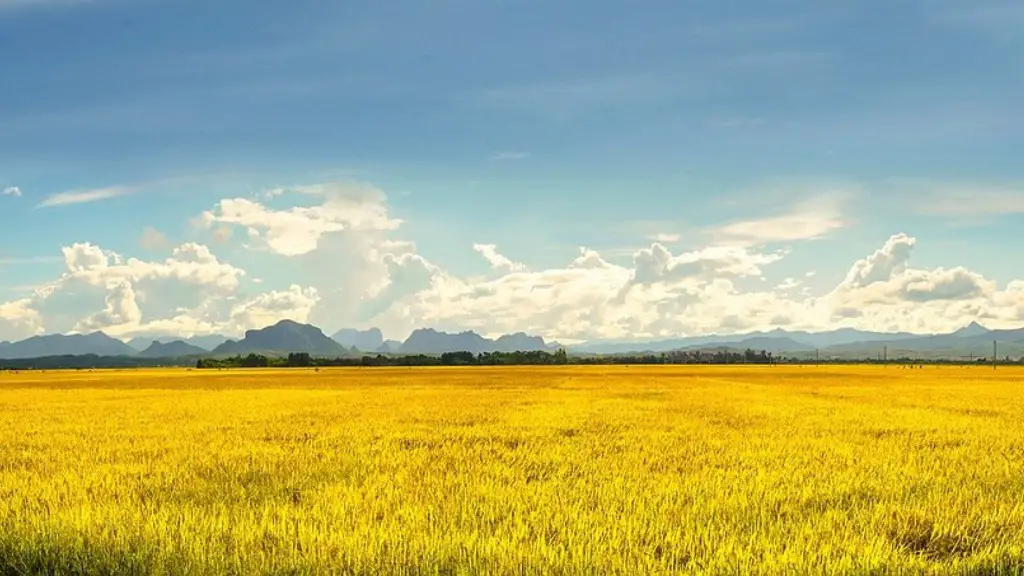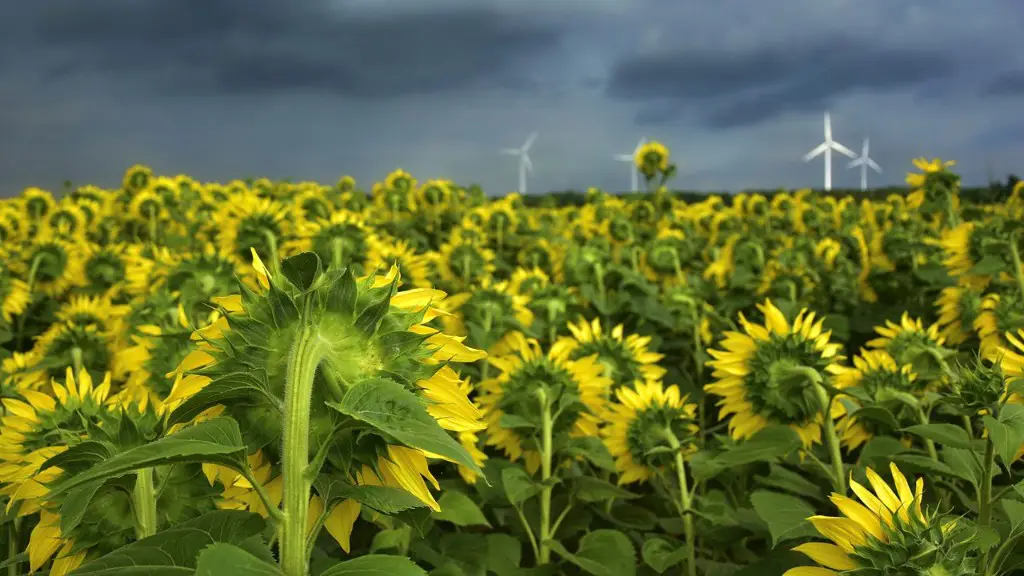Agriculture’s origin is a mystery that has left science in confusion. Despite its ancient roots, the exact place and time when farming practices first appeared is a subject of debate. Studies suggest that the earliest traces of agriculture can be found in the Middle East, in what is now Iraq, Iran, and Syria. However, some researchers suggest that the first signs of agricultural technique and crop planting probably emerged in China, Africa, and other regions of the world approximately 11,000 years ago. The advent of agriculture transformed human lifestyle and survival techniques and ultimately paved the way for civilizations, settlements, and migrations. Despite the uncertain origin of the practice, its long-term reverberations have been tangible and far-reaching.
The evolution of agriculture is considered to be one of the most transformative developments in human history. Initially, hunter-gatherer populations relied on an unpredictable ambient food supply, which is why agriculture as a system of food production became crucial to the nutrition and population growth of these societies. Through the domestication of plants and animals, this subsistence system allowed humans to cultivate crops and tend to herds of animals on a regular basis to obtain food rather than relying on wild vegetation. This is what we now call farming and is responsible for providing the necessary sustenance for generations of human existence.
As previously mentioned, it is believed that the Middle East was the place in which agricultural routines evolved first. The region offered a favourable environment in terms of natural resources. This included reliable sources of precious water and the shifting of the mono-annual rainy season along with the monsoon period. Additionally, the hilly terrains of the region were and are highly suited to the practice of cultivation and the domestication of plants and animals.
Furthermore, the generous soil of the region and its warm climate were ideal for seasonal crops, such as wheat and barley, to become staples of the diets of ancient populations. In this region, irrigation, mulching, and terracing are some of the technological improvements that have elevated the practice of agriculture to higher levels. Therefore, the Middle East could have been the place in which agriculture first appeared.
However, most scholars now agree that the appearance of agriculture in the Middle East was not a single isolated event, but a process of diffusion that was shared with different cultures around the world. It is also widely accepted that the practice of agriculture first began independently from several different climate regions such as East Asia, the Americas, Africa, and the Mediterranean. In summary, although the exact place where agriculture appeared first is unknown, the development of this practice has had a major impact on the lifestyle of many societies.
East Asia
East Asia, especially the areas in present-day China, is widely seen as another place in which crops were planted and animals were domesticated on a larger scale. The selection of crops likely included common crops such as rye, sorghum, millet, wheat, and vegetables like amaranth. Domestic animals included cows, sheep, pigs, chickens, and horses. It is believed that early farmers in East Asia utilized irrigation techniques, composting from farm animals, and tools such as a hoe and a harrow. All of these techniques allowed them to cultivate the soil and grow adequate amounts of crop.
Furthermore, these societies made effective use of terraces, stone and bamboo fences, and traditional irrigation systems, allowing for more successful agricultural practices. In addition, some societies also adopted methods like crop rotation and companion planting to increase the yield. By utilizing these various techniques, early East Asian farmers could have potentially grown crops of bigger quantity and higher quality than their contemporaries.
The advancement of the farming system in East Asia was also due to its social and environmental contexts. It is widely agreed that the close sociocultural involvement of the people living in this region allowed them to share knowledge, promote collective action, and transfer their experiences with one another. Moreover, the region’s warm weather and favorable geographic conditions also contributed to the sustainability of the farming system.
Thanks to these achievements of early farming communities, East Asia quickly witnessed several advancements in food production and preparation. This allowed traders and merchants to export these products to other regions, including Europe and the Middle East. As a result, this opened up the possibility of cultural and technological exchange between East Asian countries and other nations, which was required for the progress of local and global agriculture.
Africa
Africa is another area believed to have been the site of one of the first agricultural practices. Archaeological evidence, such as wheeled ploughs, suggests that farming in this region might have already been in progress as early as 2000 BCE, and possibly as early as 6000 BCE. Early African farmers likely grew sorghum, millet, yams, and wild rice among others. They also domesticated both animals and plants which were suitable to their environment. This could explain why there are still native species like African rice and sorghum present in the region today.
Tribal societies in the hot and dry climate of Africa developed innovative farming techniques. These included the use of irrigation canals, zigzag ploughing, digging of ditches, and planting of crops in two lines to reduce seeding and weeding effort. Labour division was a common aspect of the farming system in Africa, as it enabled families to tend to small plots of land with maximum productivity as well as providing for other aspects of the community.
African farmers also made use of natural resources such as rivers to irrigate their fields and forests for hunting and gathering. They also utilized the area’s favourable soil and terrain to produce an abundance of crops, including yam and cassava. Additionally, African communities created agricultural preserves and hunting zones in order to ensure that farming and pastoral activities did not come into contact with one another.
All in all, farming and other food processing practices in Africa appeared with the rise of civilizations in the region. Over time, it significantly contributed to the economy and provided for the needs of the people in the particular region. Today, it remains a major contributor to Africa’s economic growth and fosters relationships with other countries in the world.
The Americas
In the Americas, agriculture first appeared approximately 10,000 years ago. It is believed that these early farming practices partly stemmed from ancestral traditions of the ancient hunter-gatherers in the region. Early American farmers utilized the climate, geographical features, and soil of the region to their advantage, allowing them to cultivate crops such as beans, peppers, maize, squash, and potatoes. Additionally, they domesticated animals such as llamas, chickens, turkeys, and guinea pigs.
At the same time, the development of modern agricultural practices occurred as early farmers began to experiment with horticultural techniques such as seed selection, crop rotation, and terrace irrigation. This was due to an understanding of the region’s natural environment and its seasonal cycles. Along with the help of terraced fields, local farmers created water reservoirs to collect and diverge water, allowing their crops to thrive in the otherwise inhospitable terrain.
The population of the Americas changed drastically with the advent of agriculture. By producing their own food, rather than relying on wild vegetation and animal sources, farmers were able to settle in villages and later large cities. This population growth and demographic shift allowed for new sciences, art, and architecture to evolve in the region.
The effect of the transition from a hunter-gatherer existence to a farming lifestyle allowed for a culture centered around food production and cultivation. This led to the development of calendrical systems based on the planting of certain crops and their harvest, in turn allowing for the proliferation of rites of passage and other spiritual activities.
The Mediterranean
In the Mediterranean region, the transition to agriculture occurred gradually. Many scholars believe it happened around 8,000-7,000 BCE, when ancient populations there replaced hunting and gathering methods with crop and livestock farming. Early farming in this region likely included the production of domesticated animals, vegetables, and grains, such as barley and wheat.
In the Mediterranean area, local farmers made use of the region’s favorable climate, geographical features, and soil to develop advanced cultivation techniques. These included the process of terracing, which equalized the elevation of the land and made it easier for farmers to irrigate their crops. Along with this, advanced irrigation systems and the use of manure and compost to fertilize the soil also contributed to the prosperity of local farming and the harvesting of an improved crop yield.
In addition to manual farming techniques, the Mediterranean region saw the emergence of farm tools such as sickles, threshing tools, ploughs, and draw knives. These tools not only allowed for greater efficiency in harvesting, but also the organization of large-scale agricultural activities that aided in the economy of the respective regions. Dwellings were also constructed near the fields, creating a closer connection between communities and the soil.
The Mediterranean climate proved to be ideal as it resulted in greater yields of wheat, oats, barley, millet, and other grains. This also allowed Rome and Greece to become dominant early societies due to their high agricultural production. The Mediterranean region has been the stage for the development of some of the most significant achievements in agriculture since its emergence, with knowledge and innovations being exchanged across the region.





